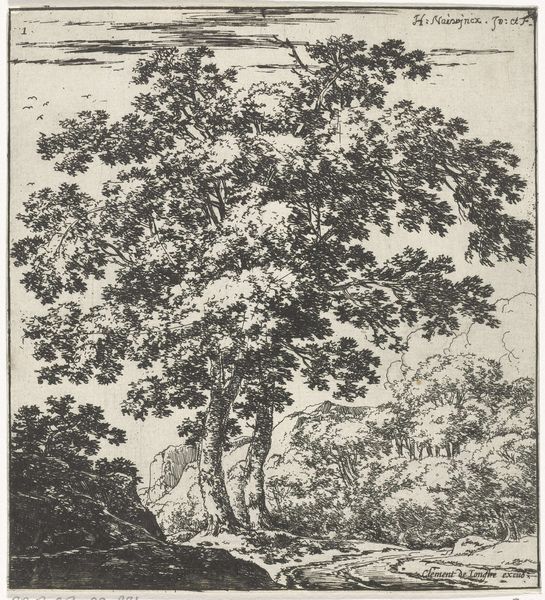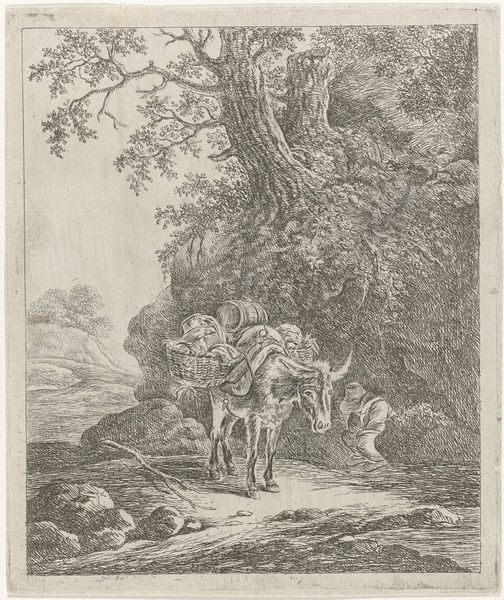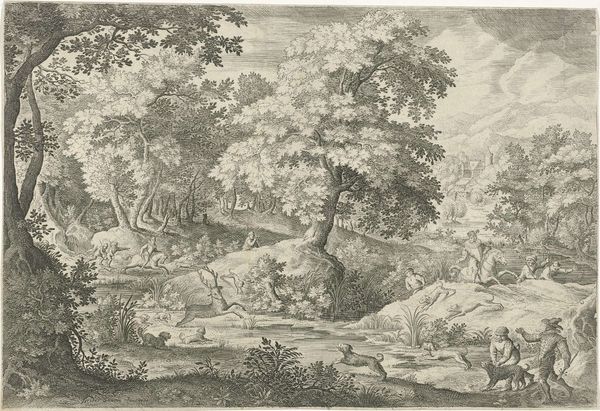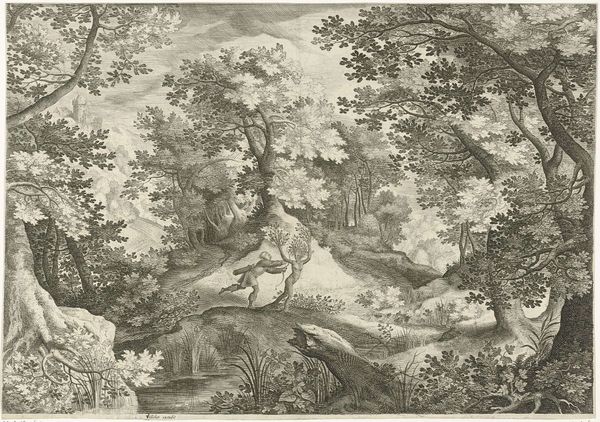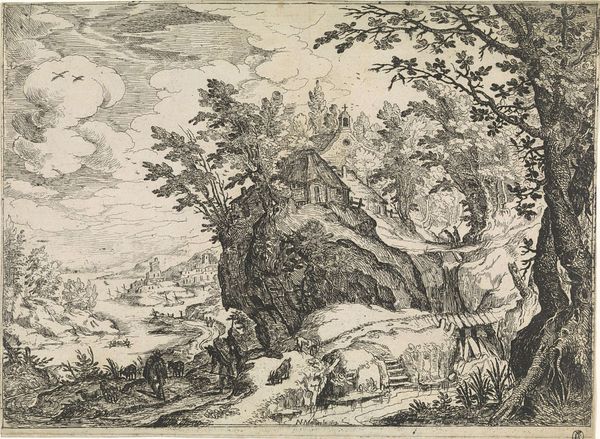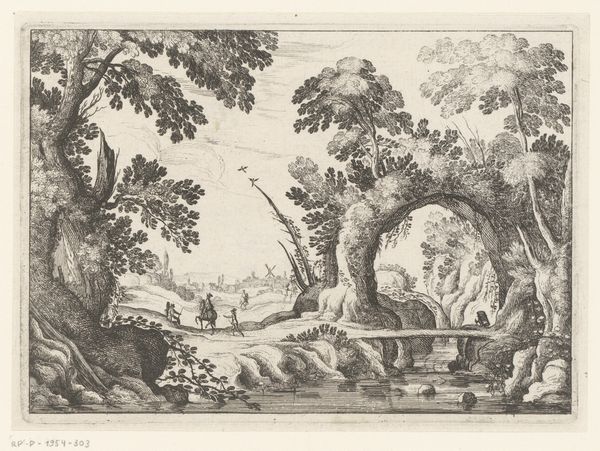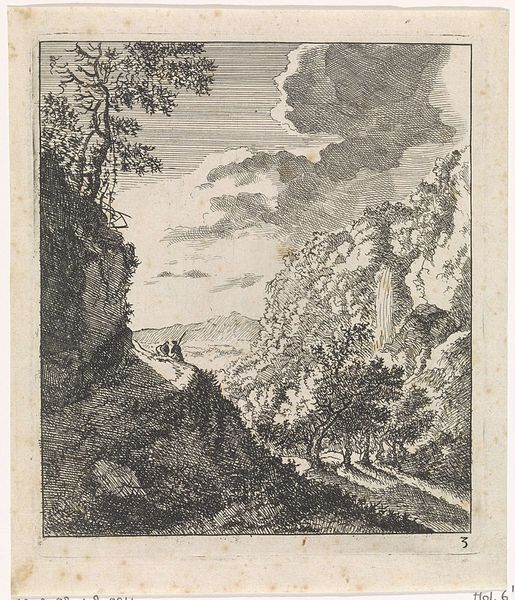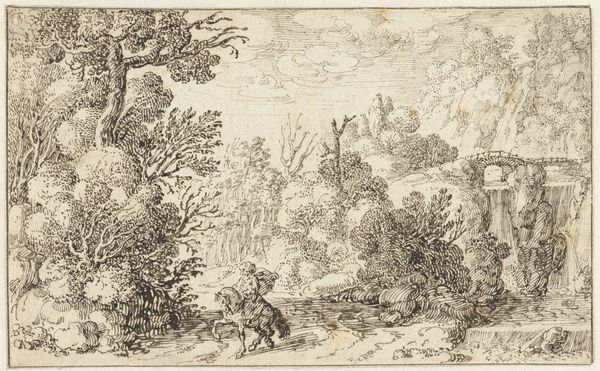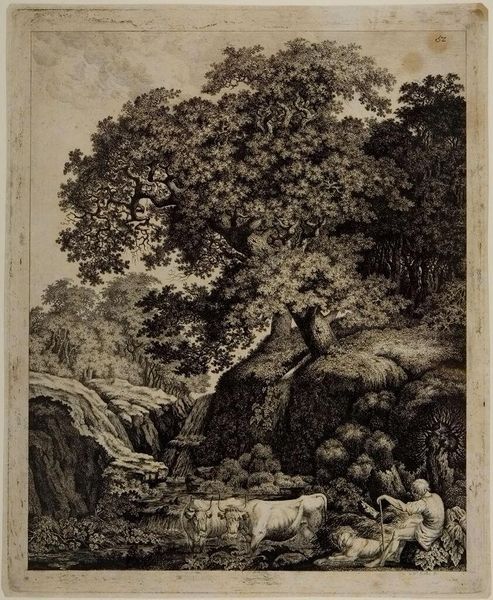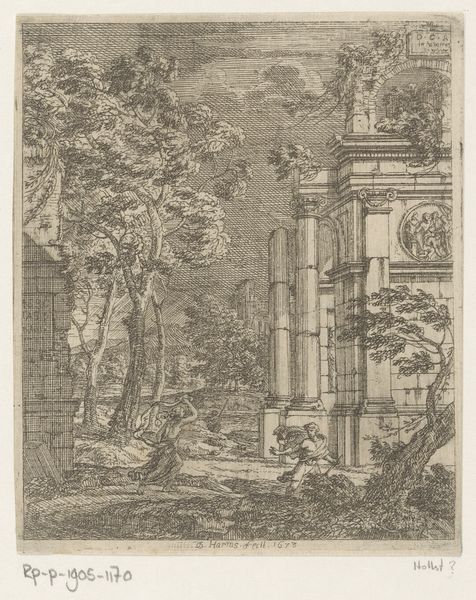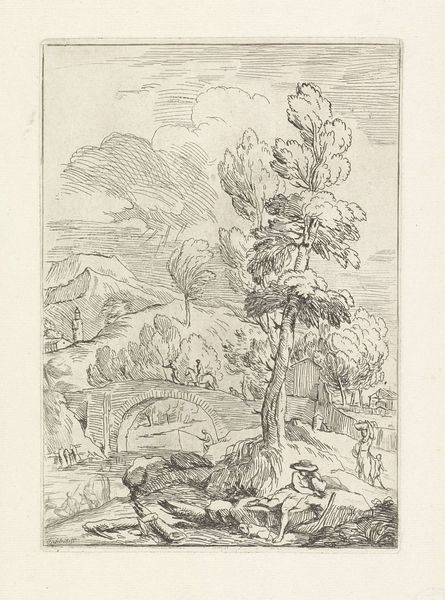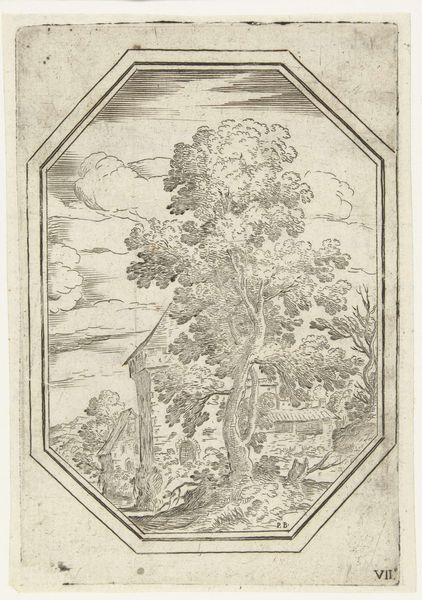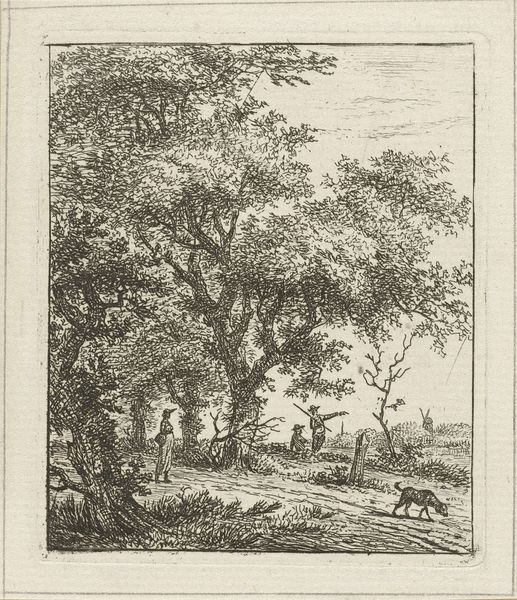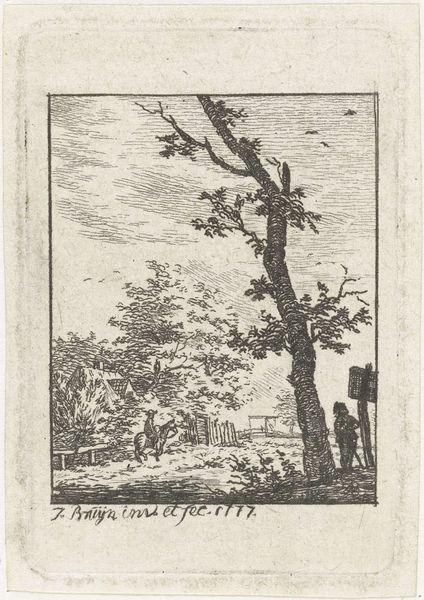
drawing, ink
#
drawing
#
pen drawing
#
landscape
#
ink
#
classicism
#
history-painting
Dimensions: height 218 mm, width 157 mm
Copyright: Rijks Museum: Open Domain
Editor: This is Isaac de Moucheron's "Classicistisch landschap," dating from 1677 to 1744. It's rendered in ink as a pen drawing. I find the scene quite serene, but the details in the trees and architecture also feel very precise. What can you tell me about it? Curator: Well, consider first the labor involved in a drawing of this intricacy. Each line meticulously placed by the artist's hand. But more than that, how does the piece reflect the consumption habits of its intended audience? This isn't just a pretty landscape; it’s a crafted ideal reflecting a particular worldview. The use of ink and paper, both commodities, contributes to its cultural meaning. Editor: Consumption habits? It is a landscape... so you are suggesting something about land? Curator: In a way, yes. The subject isn’t a true depiction of a Dutch landscape, is it? This classicizing sets an artificial stage, almost a fabrication built upon artistic convention and elite expectations. Ask yourself why someone might want to buy a scene of such manufactured leisure, or the materials needed to produce and disseminate it to begin with? Editor: So, the image represents a yearning for a classical past or perhaps control over an ideal world constructed by consumption and refined craft? Curator: Precisely. The landscape is a commodity, like the ink used to render it, a material representation of desire and control. The medium itself participates in constructing meaning and, indeed, in a specific social order. Editor: That’s given me a lot to think about, especially how seemingly simple images can reveal complex power structures. Curator: Absolutely. The point is that we examine closely the process of art, we find cultural values embedded in the artwork.
Comments
No comments
Be the first to comment and join the conversation on the ultimate creative platform.
